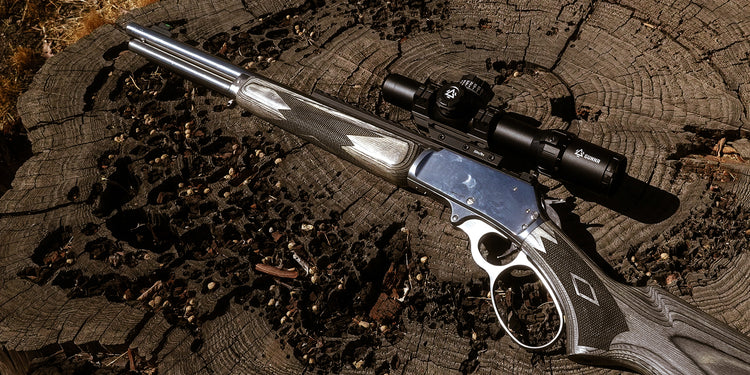What Is a Tactical Optic?
Tactical rifle optics are built for speed, precision, and durability under pressure. Unlike hunting optics, which prioritize clarity and magnification for long-range static targets, tactical optics must perform in fast-moving, unpredictable environments—such as training ranges, defense scenarios, or law enforcement operations.
This guide breaks down the essential components that determine whether a tactical optic is worth your investment.
Lens Material and Optical Coatings
A high-quality lens is the heart of any optic. Tactical applications often demand high clarity in low-light or high-glare conditions, making lens materials and coatings crucial.
ED Glass (Extra-low Dispersion Glass) reduces chromatic aberration, which helps deliver a sharper, more color-accurate image.
Lens coatings are also essential:
-
Fully Multi-Coated lenses have multiple anti-reflective layers on all air-to-glass surfaces, improving light transmission and reducing glare.
-
Single-coated or partially coated optics typically offer inferior image quality.
More coatings = better clarity and performance in challenging environments.
Tube Construction and Durability
Tactical Optics are designed for rugged use. Their construction must withstand shock, moisture, and extreme temperature changes.
Key build features:
-
One-piece aircraft-grade aluminum tubes are preferred for durability and alignment stability.
-
Shock resistance ensures the optic maintains zero even after recoil or drops.
-
Waterproofing (often using O-ring seals) protects internal components from moisture.
-
Fog-proofing, usually achieved through nitrogen or argon gas purging, prevents internal condensation.
Turrets and Adjustment Systems
A good tactical optic offers precise, repeatable adjustments with clearly marked turrets.
MOA vs MIL/MRAD
-
MOA (Minute of Angle): 1 MOA ≈ 1 inch at 100 yards
-
MIL/MRAD (Milliradian): 1 MIL ≈ 3.6 inches at 100 yards
Both are systems to adjust windage (left/right) and elevation (up/down). Which is better? It depends on your training—MIL/MRAD is more common in military systems, while MOA is popular in civilian use.
Zero Retention
This refers to a optic's ability to maintain its calibrated setting (or "zero") even after heavy use. An optic with poor zero retention will drift, leading to missed shots.
Parallax Adjustment and Eye Relief
Parallax Adjustment
Parallax error happens when the reticle and the target appear to shift when your eye moves behind the optic.
High-quality scopes include parallax adjustment knobs to ensure the reticle stays fixed on target, particularly at longer ranges.
Eye Relief
This is the distance from your eye to the optic where you get a full image without dark edges (vignetting). Tactical optics should offer generous eye relief to prevent scope bite and allow for flexible shooting positions.
Typical eye relief ranges from 3 to 4 inches. Longer is better for high-recoil firearms.
Reticle Type and Placement
The reticle, or crosshair, is what you aim with—and its design matters.
Common tactical reticle types include:
-
MIL-Dot: Simple and useful for ranging and holdovers
-
BDC (Bullet Drop Compensation): Calibrated for specific calibers or distances
-
T-style or Grid-style: Popular in precision shooting and ranging
First vs Second Focal Plane
-
FFP (First Focal Plane): Reticle size changes with magnification, so holdovers stay accurate at all magnification levels.
-
SFP (Second Focal Plane): Reticle size stays the same, but holdovers are only accurate at one magnification level (usually max power).
Quick Glossary of Common Terms
|
Term |
Explanation |
|
LPVO |
Low Power Variable Optic – a type of optic that isn't covered in this article. |
|
Minute of Angle – 1 MOA = ~1 inch at 100 yards. Used in turret adjustments. |
|
|
MIL |
Milliradian – 1 MIL = ~3.6 inches at 100 yards. Another unit for adjustments. |
|
ED Glass |
Extra-low Dispersion glass – minimizes color distortion and enhances clarity. |
|
Reticle |
The aiming pattern (crosshairs or grid) inside a optic. |
|
Parallax |
A misalignment between the reticle and target when your eye is off-center. |
|
Eye Relief |
The distance from your eye to the optic where the full view is visible. |
|
Zero Retention |
The optic's ability to stay calibrated after use or shock. |
|
Fully Multi-Coated |
Optics with multiple layers of anti-reflective coating for better light transmission. |
|
One-piece Tube |
An optic tube machined from a single block of metal or alloy – stronger and more stable. |
Note: The glossary provided above is a preliminary reference. We'll continue to update and expand this list as we introduce more articles and insights into the world of tactical optics. Stay tuned!
Final Thoughts
A good tactical optic isn't about fancy features—it is about consistent performance under pressure. Focus on quality glass, solid construction, precise turrets, and a reliable reticle system. Whether you are in training or in the field, these fundamentals will make the difference between a hit or a miss.


